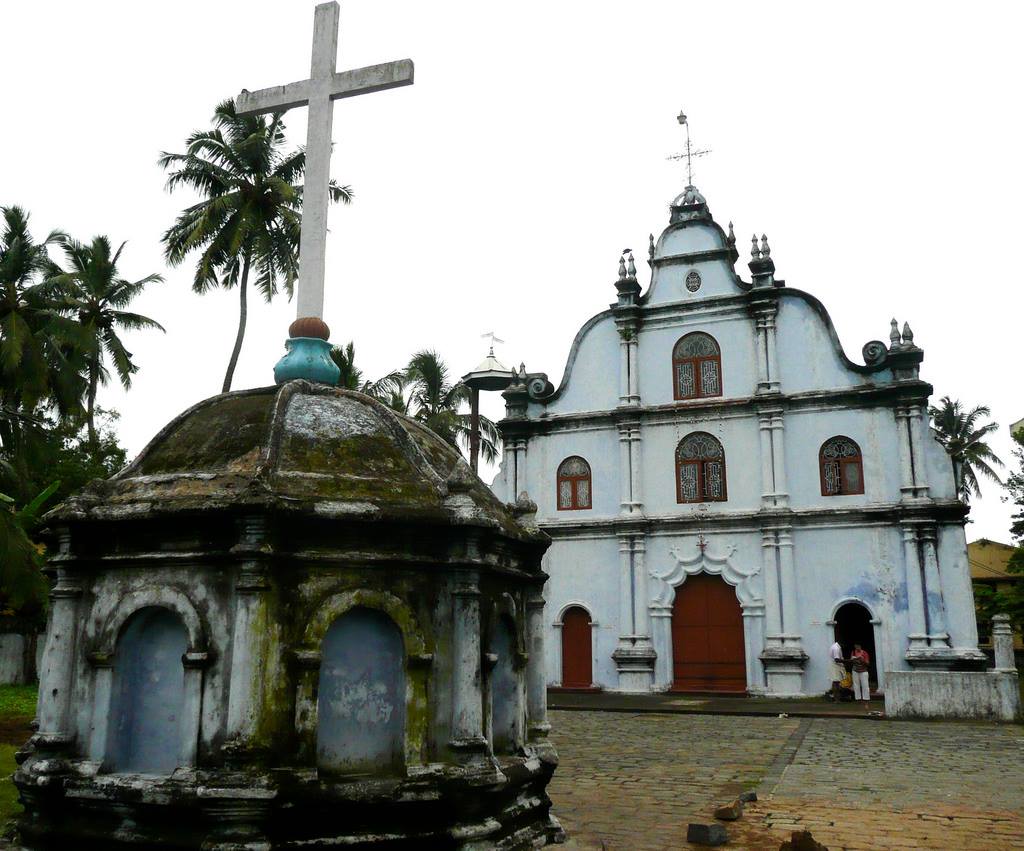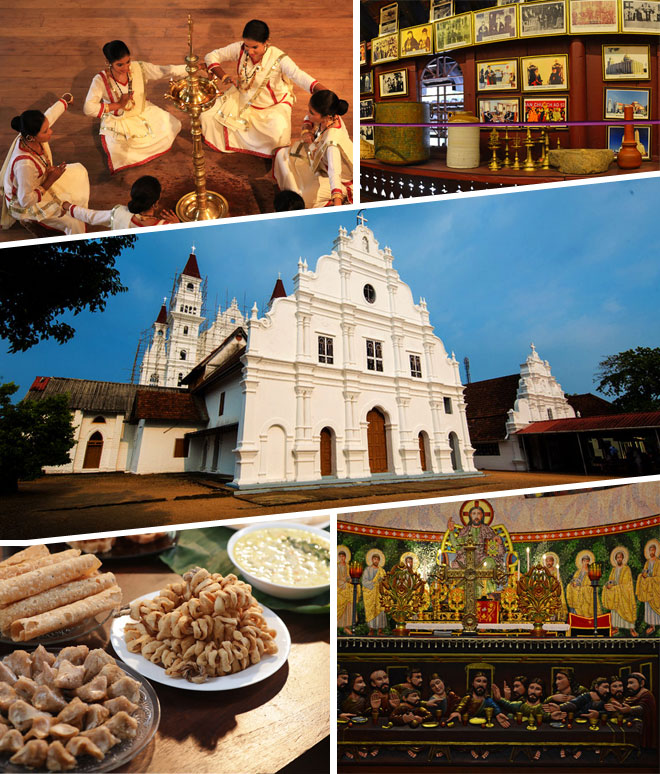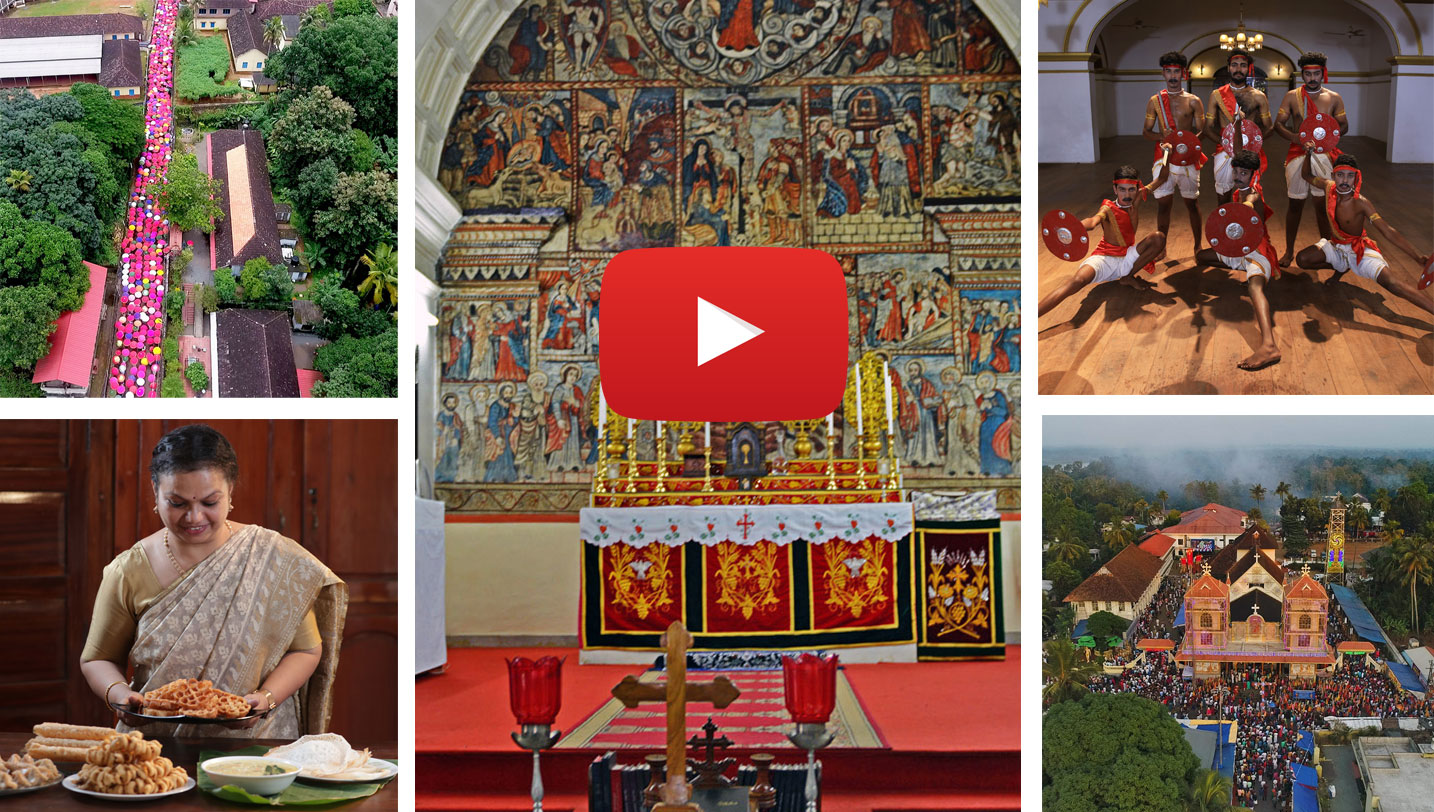Coonan Cross Oath (Koonan Kurishu Sathyam)

Along with the Portuguese, Augustinians, Franciscans, Jesuits, and Carmelites reached Kerala for missionary activities and converted many to Christianity. The Latin priests were unwilling to accept the St. Thomas Christians who followed the Syrian Rites. The Synod of Diamper was an attempt to bring them under the Pope. After the Synod, churches were reorganized in the Latin style and the service in churches was also changed to the Latin system. The traditional education system of Malpanates was changed and seminaries were set up instead. Latin was included in the curriculum.
Francis Ross was succeeded by Stephen Britto and Francis Garsia. When Garsia was governing the Archdiocese, Syrian Rite changed to Latin Rite. In protest against the domination of the Portuguese, the St. Thomas Christians tied a long rope on a ‘standing cross’ on the northern side of the Mattancherry Church on Friday, January 3, 1653 and took an oath -"as long as this trial exists, we will not submit to the priests of Samballoor.” The Coonan Cross Oath (Koonan Kurissu Sathyam) which was a turning point in the case of the Christians, who held Angamaly as their headquarters, is considered to be a reaction to the Synod of Diamper. At a meeting held at Alangad on May 22, 1653, one faction swore that they would not accept Francis Garcia Metropolitan.
Thus St. Thomas Christians split into two groups. Subsequently, 12 priests met under the leadership of Anjilimoottil Itty Thoman Kathanar the same year and ordained Archdeacon Thoma as Metropolitan. His followers were known as Puthan kuttukar and others as Pazhaya kuttukar. Archdeacon Thoma who was known as Mar Thoma I, started communicating with the Jacobite Patriarch of Antioch and the Jacobite Church was established with Angamaly as its headquarters.
- The Tradition of St. Thomas
- The arrival of St. Thomas
- Seven and half Churches
- Post St. Thomas arrivals
- The scenario before the arrival of Gama
- Missionary Activities
- Descriptions of St. Thomas Christians
- The Padruodo
- Portuguese Forts
- Synod of Diamper
- Latinization of Churches
- Coonan Cross Oath
- Post Koonan Kurissu
- Establishment of churches
- Starting of Seminaries
- Anglo Indians
- Migrations to Malabar

